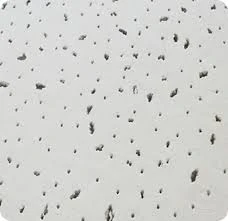Dec . 11, 2024 06:04 Back to list
Innovative Design for T-Bar Ceiling Frame Installation Solutions and Techniques
Understanding T-Bar Ceiling Frames Design and Implementation
When it comes to interior construction and design, the T-bar ceiling frame is an often-overlooked yet significantly essential component. Commonly referred to as a suspended ceiling or drop ceiling, this system has grown in popularity due to its versatility, affordability, and ease of installation. This article delves into the fundamentals of T-bar ceiling frames, their design considerations, advantages, and the process of implementation.
What is a T-Bar Ceiling Frame?
A T-bar ceiling frame consists of a grid structure made from metal or sometimes plastic materials that support ceiling tiles or panels. The “T-bar” refers to the T-shaped cross-section of the grid patterns that form the framework for holding the ceiling tiles in place. Typically, these ceilings are suspended a few inches below the original ceiling, creating a space for plumbing, air conditioning ducts, and electrical conduits.
Design Considerations
When designing a T-bar ceiling frame, several factors must be considered. The first consideration is the height of the ceiling. Suspended ceilings typically require a certain clearance, and spaces with low ceilings may need careful planning to ensure accessibility while maintaining aesthetics.
Another aspect to consider is acoustics. Many T-bar ceiling systems are designed with acoustic tiles that help noise absorption in busy environments such as schools and offices. The choice of tiles will depend on the specific acoustic goals of the space.
Lighting is another critical component of T-bar ceiling design. Integrated lighting options can enhance the functionality and aesthetics of a suspended ceiling. Designers often incorporate recessed lights, panel lights, or even decorative fixtures that complement the overall theme of the interior.
Advantages of T-Bar Ceilings
The T-bar ceiling's popularity can be attributed to several advantages
1. Cost-Effective T-bar ceilings are generally more affordable than traditional drywall ceilings. The materials required for installation are less expensive, and the installation process itself can be completed quickly by professionals or even DIY enthusiasts.
2. Accessibility One of the significant benefits of a T-bar ceiling is that it allows easy access to the space above the grid. Maintenance personnel can quickly remove tiles to access electrical systems, plumbing, or HVAC ducts without dismantling entire sections of the ceiling.
t bar ceiling frame

3. Aesthetic Versatility T-bar ceilings are available in various styles, colors, and textures, allowing designers to achieve a desired look that fits the overall interior decor. From sleek modern designs to traditional patterns, the options are plentiful.
4. Energy Efficiency By incorporating insulation in the space above the tiles, T-bar ceilings can contribute to improved energy efficiency in buildings. This can lead to lower heating and cooling costs over time.
5. Quick Installation Compared to traditional ceilings, T-bar ceilings can be installed relatively quickly. This is particularly advantageous in commercial settings where time is often of the essence.
Implementation Process
Implementing a T-bar ceiling frame involves several steps
1. Planning and Measurement Begin by measuring the area where the T-bar frame will be installed. Make sure to account for any obstructions such as lights and vents.
2. Framework Installation Start by installing the main runner tracks, which form the backbone of the T-bar ceiling. They are usually positioned at regular intervals, typically 4 feet apart.
3. Adding Cross Tees Once the main runners are in place, cross tees are added to create the grid pattern. The spacing often depends on the size of the ceiling tiles.
4. Installing Ceiling Tiles After the grid is completed, the ceiling tiles can be inserted into the T-bar framework. Tiles should fit snugly but allow for easy removal when maintenance is necessary.
5. Final Touches Finish the installation by ensuring that lighting fixtures, if any, are properly integrated and that all tiles are securely in place.
Conclusion
In summary, T-bar ceiling frames are a fantastic solution for modern interior construction, blending practicality with design. Understanding their benefits, design considerations, and installation process can aid homeowners, builders, and designers in making informed decisions. Whether for commercial or residential projects, T-bar ceilings provide an efficient way to enhance spaces while allowing for easy maintenance and versatility in design.
-
Durable Ceiling T Grid Systems | Easy InstallationNewsAug.29,2025
-
PVC Gypsum Ceiling: Durable, Laminated Tiles for Modern SpacesNewsAug.28,2025
-
Pvc Gypsum Ceiling Is DurableNewsAug.21,2025
-
Mineral Fiber Board Is DurableNewsAug.21,2025
-
Ceiling Tile Clip Reusable DesignNewsAug.21,2025
-
Ceiling T Grid Modular DesignNewsAug.21,2025







